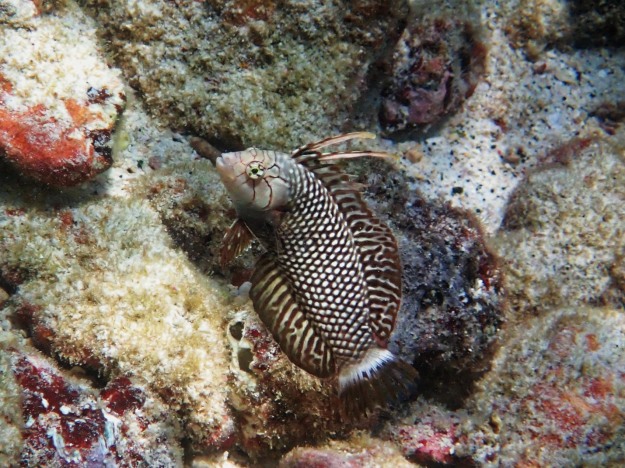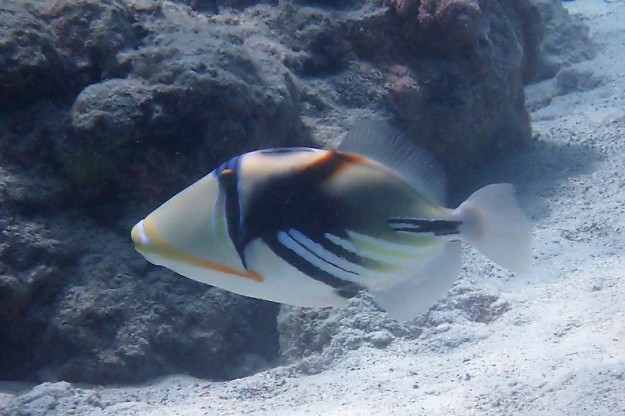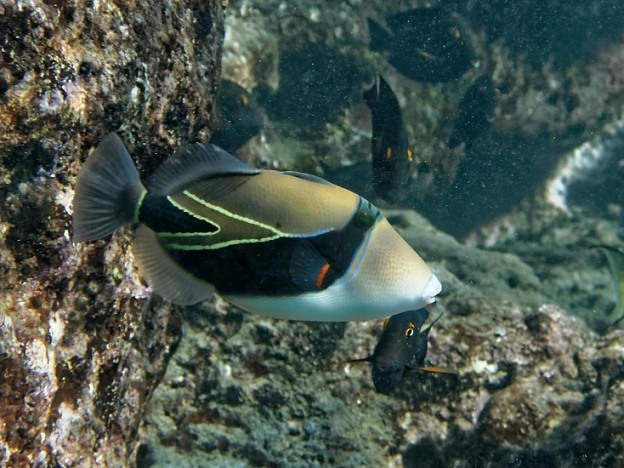Kahalu’u Beach Park, a few miles south of Kailua Kona, seems an unlikely spot for fishwatching. It’s usually teaming with sunburned tourists on the beach and snorkeling close to shore, packed so densely that they’re running into one another. Partly due to the crowds, the near-shore water tends to be rather cloudy, but holds a surprising number of fish swimming among the people’s legs. If you snorkel further out into the large, shallow bay the water clears up and it becomes obvious why this beach is listed in all the guides as one of the best fishwatching spots on the Island. Fish here are plentiful, diverse, and quite tame, the last due to the fact that spearfishing is prohibited in the Park.

The bright green juvenile old woman wrasse is a real eye-catcher. No other Hawaiian reef fish is this green. This one is about an inch and a half long.
Summer is the season of juvenile fish on the reefs. Many years (especially 2014—see the 7/4/14 post, the first on this blog) surgeonfish dominate the young-of-the-year crop. This year juvenile wrasses seem to dominate. We saw a couple of rather unusual young wrasses at Kahalu’u the other day. The first, spotted by Marla in a recess in the coral, was an old woman (or blacktail) wrasse. These endemics are rather uncommon and spotting a juvenile is a treat. The second, also spotted by Marla, but this time on an open flat, was a juvenile rockmover wrasse. Rockmovers are more common than blacktails, but the juveniles of this species are particularly interesting:

Juvenile rockmover wrasses swim in a flaccid, desultory manner, gently waving their elongated fins. The result is a fairly good imitation of a drifting piece of seaweed—presumably a protective ploy to avoid predation. This individual is fairly old—maybe three inches in length—and is already beginning to take on the looks of the adult. The seaweed effect is even more dramatic in younger fish.
If you look closely at the above photo of the old woman wrasse (click on it) you’ll see odd looking white marks on the dead coral in the upper right. These are fish teethmarks. I’m not sure what made them, probably a parrotfish of some sort or maybe a barred filefish. As the coral was dead, the fish that made these marks was not trying to eat coral, but rather the algae growing on the dead substrate. Maybe this stareye parrot, photographed on the same day at Kahalu’u, made the marks:







